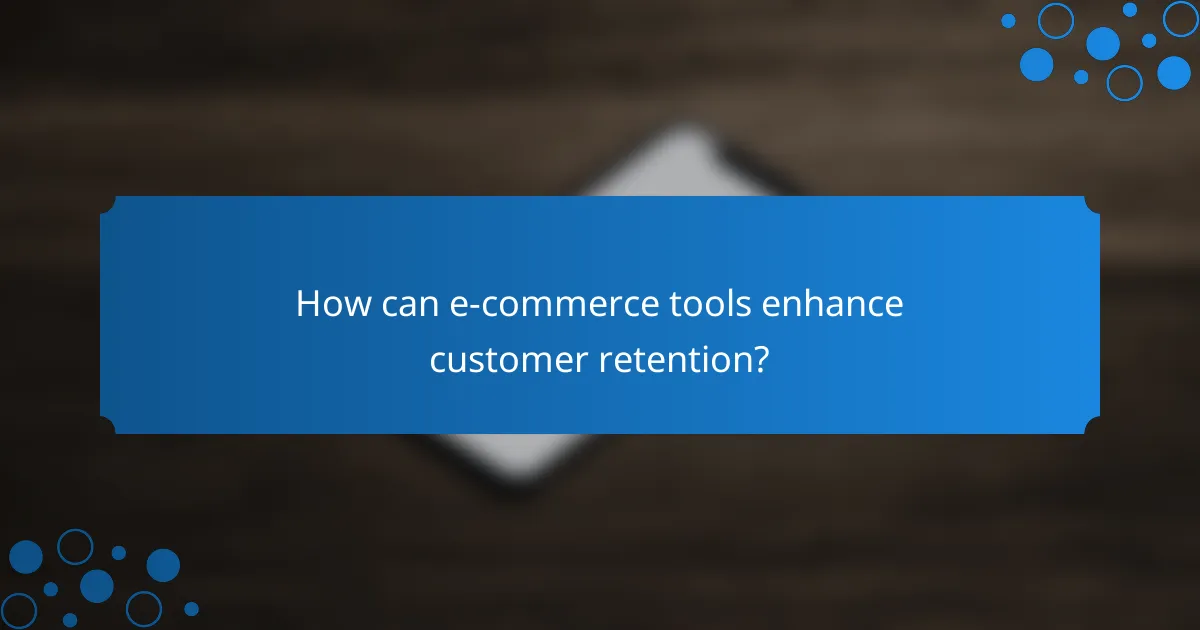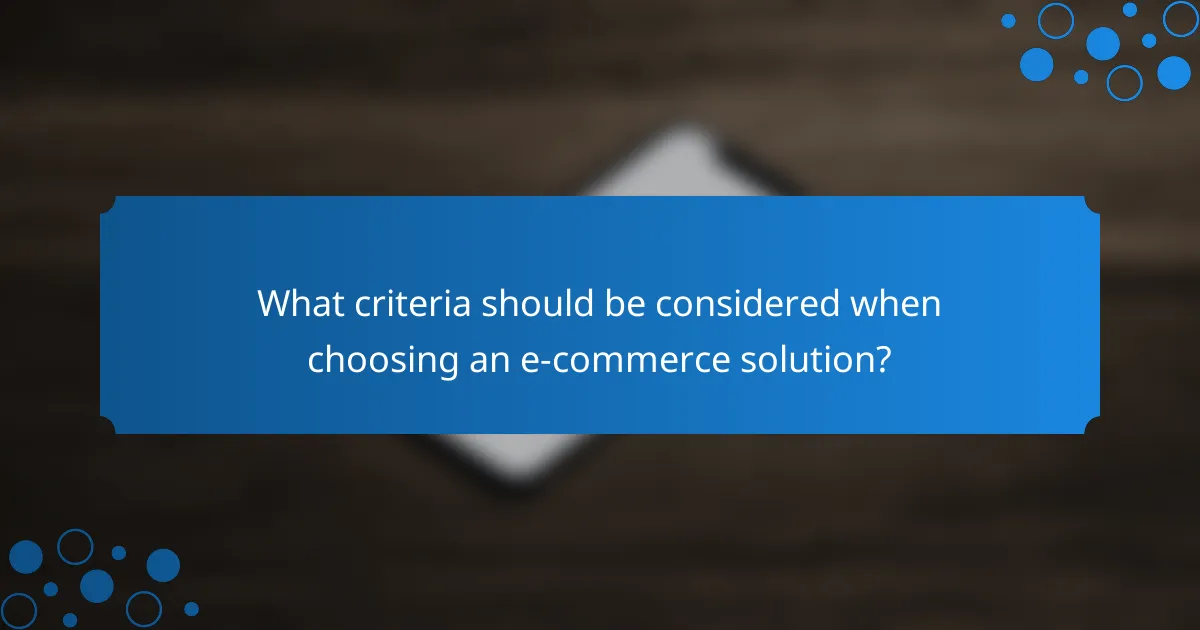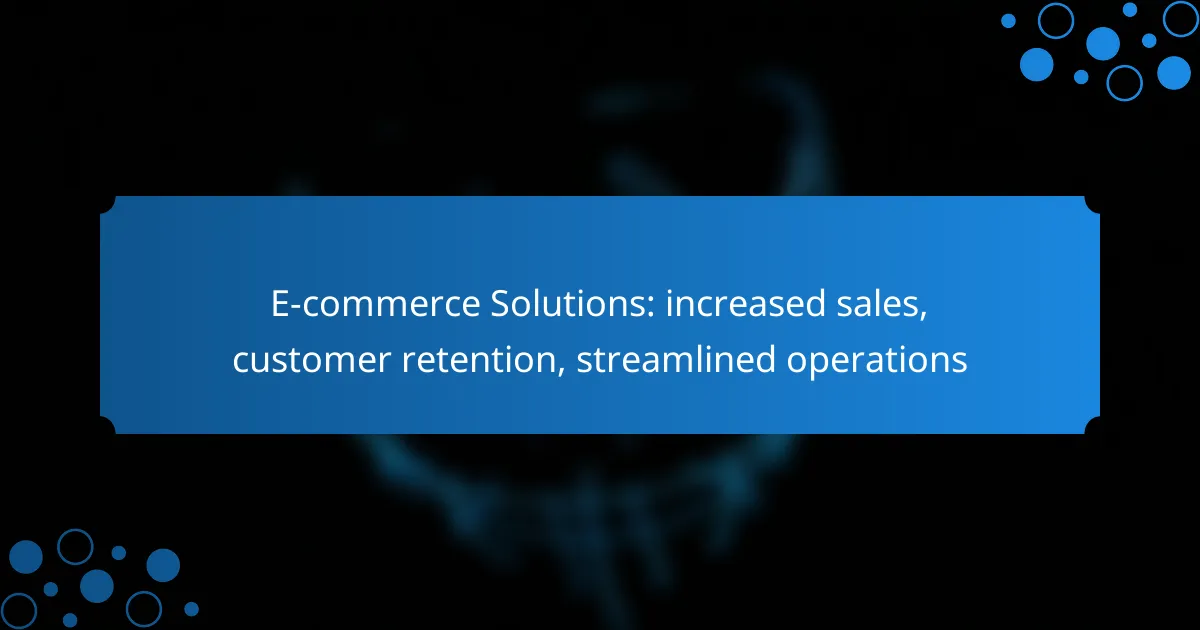In today’s competitive market, effective e-commerce solutions are essential for driving increased sales and enhancing customer retention. By leveraging customizable platforms that integrate seamlessly with existing systems, businesses can optimize their online presence and create personalized experiences for their customers. Additionally, automating key operational processes not only streamlines operations but also fosters greater customer satisfaction, ultimately leading to improved business performance.

What are the best e-commerce solutions for increased sales in New Zealand?
The best e-commerce solutions for increased sales in New Zealand include platforms that offer customization, scalability, and integration with existing systems. These solutions help businesses optimize their online presence and enhance customer engagement, ultimately driving sales growth.
Shopify for customizable online stores
Shopify is a leading e-commerce platform known for its user-friendly interface and extensive customization options. It allows businesses in New Zealand to create tailored online stores with various themes and plugins, catering to specific customer needs.
With Shopify, merchants can easily manage inventory, process payments in NZD, and utilize built-in marketing tools to boost sales. The platform also offers a range of apps to enhance functionality, making it suitable for businesses of all sizes.
BigCommerce for scalability
BigCommerce is ideal for businesses looking to scale their operations without compromising performance. This platform supports a wide range of products and high traffic volumes, making it perfect for growing e-commerce stores in New Zealand.
Key features include advanced SEO capabilities, multi-channel selling, and robust analytics tools. Businesses can leverage these tools to optimize their sales strategies and efficiently manage their online presence as they expand.
WooCommerce for WordPress integration
WooCommerce is a powerful plugin for WordPress that transforms a standard website into a fully functional e-commerce store. It is particularly beneficial for businesses already using WordPress, as it offers seamless integration and flexibility.
With WooCommerce, merchants can customize their stores extensively, manage inventory, and accept payments in NZD. This solution is cost-effective, especially for small to medium-sized businesses looking to maintain a strong online presence.
Magento for enterprise-level needs
Magento is a robust e-commerce platform designed for larger enterprises with complex needs. It offers extensive features for customization, scalability, and performance, making it suitable for high-volume sales environments in New Zealand.
Businesses using Magento can benefit from advanced marketing tools, customer segmentation, and detailed analytics. However, it requires a higher level of technical expertise to manage, so companies should ensure they have the necessary resources for implementation and maintenance.

How can e-commerce tools enhance customer retention?
E-commerce tools can significantly boost customer retention by providing personalized experiences, efficient communication, and responsive support. By integrating various platforms, businesses can create a seamless journey that keeps customers engaged and satisfied.
HubSpot for CRM integration
HubSpot offers a robust CRM solution that helps businesses manage customer relationships effectively. By centralizing customer data, it allows for personalized marketing and sales efforts, which can lead to increased loyalty. For example, tracking customer interactions can help tailor follow-up communications based on previous purchases.
Consider using HubSpot’s automation features to streamline your outreach. Setting up workflows can ensure timely follow-ups, reducing the chances of customers feeling neglected. However, be cautious not to over-automate; maintaining a personal touch is crucial for retention.
Mailchimp for email marketing automation
Mailchimp is a powerful tool for automating email marketing campaigns, which is essential for keeping customers informed and engaged. By segmenting your audience, you can send targeted messages that resonate with specific groups, enhancing the likelihood of repeat purchases.
Utilize Mailchimp’s analytics to track open rates and engagement metrics. This data can inform your strategies and help refine your messaging over time. Avoid bombarding customers with emails; instead, focus on quality content that adds value to their experience.
Zendesk for customer support
Zendesk provides a comprehensive customer support platform that enhances retention by ensuring customers receive timely and effective assistance. With features like live chat and ticketing systems, businesses can address inquiries quickly, fostering a positive customer experience.
Implementing Zendesk can streamline your support processes, allowing for better tracking of customer issues and resolutions. Regularly review support metrics to identify areas for improvement. Remember, prompt and empathetic responses can significantly impact customer loyalty, so prioritize training for your support team.

What operational efficiencies do e-commerce platforms offer?
E-commerce platforms provide significant operational efficiencies by automating key processes such as inventory management, order fulfillment, and payment processing. These efficiencies can lead to increased sales, improved customer retention, and streamlined operations, ultimately enhancing the overall business performance.
Inventory management with TradeGecko
TradeGecko offers a robust inventory management solution that helps businesses track stock levels in real-time. By integrating with various sales channels, it allows for automatic updates of inventory counts, reducing the risk of overselling or stockouts.
Consider using TradeGecko if your business has multiple sales outlets or requires detailed reporting on inventory turnover. It can help you manage product variants and streamline reordering processes, ensuring you maintain optimal stock levels.
Order fulfillment through ShipStation
ShipStation simplifies order fulfillment by consolidating orders from various sales channels into one platform. It automates shipping label creation and provides access to discounted shipping rates, which can significantly reduce shipping costs.
Utilizing ShipStation can enhance your shipping efficiency by allowing batch processing of orders. Ensure you set up your shipping rules based on your customer preferences to improve delivery times and customer satisfaction.
Payment processing with Stripe
Stripe is a leading payment processing platform that enables businesses to accept payments online seamlessly. It supports various payment methods, including credit cards and digital wallets, ensuring a smooth checkout experience for customers.
When using Stripe, consider its competitive transaction fees, which typically range from 2.9% + 30¢ per successful card charge. Ensure compliance with PCI standards to protect customer data and maintain trust in your payment processes.

What criteria should be considered when choosing an e-commerce solution?
When selecting an e-commerce solution, it’s essential to evaluate factors such as scalability, integration capabilities, and cost-effectiveness. These criteria will help ensure that the platform meets current needs while supporting future growth and operational efficiency.
Scalability for future growth
Scalability refers to the ability of an e-commerce solution to handle increasing amounts of work or to accommodate growth without compromising performance. A scalable platform can support more products, higher traffic volumes, and additional features as your business expands.
When assessing scalability, consider whether the solution can easily upgrade its resources, such as bandwidth and storage. Look for platforms that offer flexible plans or allow for seamless integration of additional services as your business needs evolve.
Integration capabilities with existing tools
Integration capabilities determine how well an e-commerce solution can work with your existing tools, such as inventory management systems, CRM software, and payment gateways. A solution that easily integrates with your current technology stack can streamline operations and enhance efficiency.
Evaluate the available APIs and third-party integrations offered by the e-commerce platform. Ensure that it supports the tools you already use, which can save time and reduce the need for manual data entry, ultimately improving customer experience.
Cost-effectiveness and pricing plans
Cost-effectiveness involves analyzing the pricing plans of e-commerce solutions to ensure they align with your budget while providing the necessary features. Look for transparent pricing structures that outline all potential costs, including transaction fees, monthly subscriptions, and additional service charges.
Consider the long-term value of the solution. Sometimes, a higher upfront cost may lead to better features and lower operational costs over time. Compare different plans and assess what features are included, ensuring you choose a solution that provides the best return on investment for your business.

What are the emerging trends in e-commerce solutions?
Emerging trends in e-commerce solutions focus on enhancing user experience, increasing sales, and improving operational efficiency. Key developments include AI-driven personalization, mobile commerce, and sustainable practices that cater to evolving consumer preferences.
AI-driven personalization
AI-driven personalization tailors the shopping experience to individual customers by analyzing their behavior and preferences. This technology uses data from past purchases, browsing history, and demographic information to recommend products that are likely to interest each user.
To implement AI-driven personalization effectively, businesses should invest in robust data analytics tools and machine learning algorithms. These tools can help identify patterns and trends, enabling retailers to create targeted marketing campaigns and personalized product recommendations.
For example, an online clothing retailer might use AI to suggest outfits based on a customer’s previous purchases and browsing habits. This approach can significantly enhance customer engagement and retention, leading to increased sales over time.
